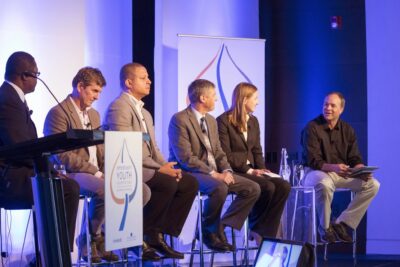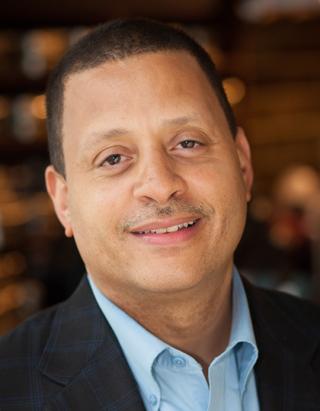
This blog is the eighth in a series following the Fall 2014 OYIF Convening. We interviewed Blair Taylor, chief community officer and president of Starbucks Foundation, who shared with us his vision for the future of the work in connecting Opportunity Youth to pathways to employment.
Tell us about your role and what you do.
My current role is chief community officer and president of Starbucks Foundation. I oversee all of our global community and philanthropic efforts.
What was one lesson, insight, or idea that resonated with you the most coming out of the OYIF Fall 2014 convening?
During the National Models of Employer Pathways plenary session that I participated in, Amy Barad of Tulane University shared a story about student who came in to interview for Tulane’s Earn & Learn program with a binder full of certificates. Despite all of her certificates, she couldn’t find a job because they didn’t provide her with the skills employers needed. This story demonstrates why it is so critical to pay attention to employers’ needs and their requirements for skills and training.
What particularly resonated with me were the strategies shared by my co-panelists from New Orleans, San Jose, and Hartford. Each of my co-panelists spoke about their approach to partnering with employers to provide on-the-job training and skills development that can enable youth to enter careers and be self-sufficient in the long-term. The Earn & Learn model at Tulane University does exactly that when it places students in apprenticeships with high-demand industries where they can be trained by employers, on-the-job, to fill these positions at Tulane and their employer partners. John Hogan, who runs TeenForce, a nonprofit staffing agency for youth in San Jose, shared an exciting strategy for placing a liaison from the San Jose collaborative inside the Chamber of Commerce to develop an understanding of employers needs and to secure their buy-in to hire opportunity youth. I also enjoyed hearing from Alex Johnson of Capital Workforce Partners about their work in engaging employers in critical sectors strategically to support opportunity youth as they move along career pathways.
Alex challenged providers to ask employers about their needs. All too often, the nonprofit and corporate sectors are speaking a different language. Jobs are the key to helping young people become self-sufficient and self-sustaining, and the two sectors need to continue to come together around this issue.
Can you share why it is important for communities to have employers at the table and to develop pathways for Opportunity Youth that are employer-driven?
Over the past 20 years, the non-profit sector has been squarely focused on disengaged youth population. Unfortunately, they have not secured the commensurate buy-in from corporate America. As such, we have focused on the “supply side” of the equation (workforce readiness), with inadequate attention paid to the “demand side.” Elevating the priority of Opportunity Youth as employees and understanding what the business sector’s requirements are for their training (to effectuate long-term placements) are both critical prerequisites for us to jointly tackle today. Corporations are now realizing that these young people are our future customers and employees, and therefore must be engaged. With that opening, there is a new opportunity for the supply and demand side to collaborate on the development of 21st Century solutions for Opportunity Youth.
Can you discuss your vision for the future of the work in connecting Opportunity Youth to pathways to employment – at Starbucks and nationwide? What is the Starbucks strategy for expanding opportunities for Starbucks employees and in communities in general?
Starbucks hires 55,000 people a year in the US alone. Our hope is that over time, we will increasingly hire from the Opportunity Youth population. But it doesn’t stop there: With our College Achievement Plan (“CAP”)–an online pathway to finishing a college degree tuition free at ASU online– Starbucks has also committed itself to investing in the development of human capital. Through our CAP initiative, a young person can work only 20 hours a week (part time) and pursue a degree in any discipline from one of the world’s leading academic institutions, Arizona State University. They can choose to pursue nursing, or engineering, or English, or any one of more than 45 choices. And once a degree is completed by a Starbucks Partner (employee), they have no obligation to remain at Starbucks. In this way, we are not only investing in the future workforce of Starbucks, but we are also investing in our collective future. We are highly cognizant about the future workforce of America. We are committed to helping to give our young people as many options, or pathways, as possible. The CAP initiative is one tangible way for us to open doors and pay dividends for young people throughout the entire course of their careers.
Check out the video of the National Models of Employer Pathways plenary session at the Fall 2014 OYIF Convening.
